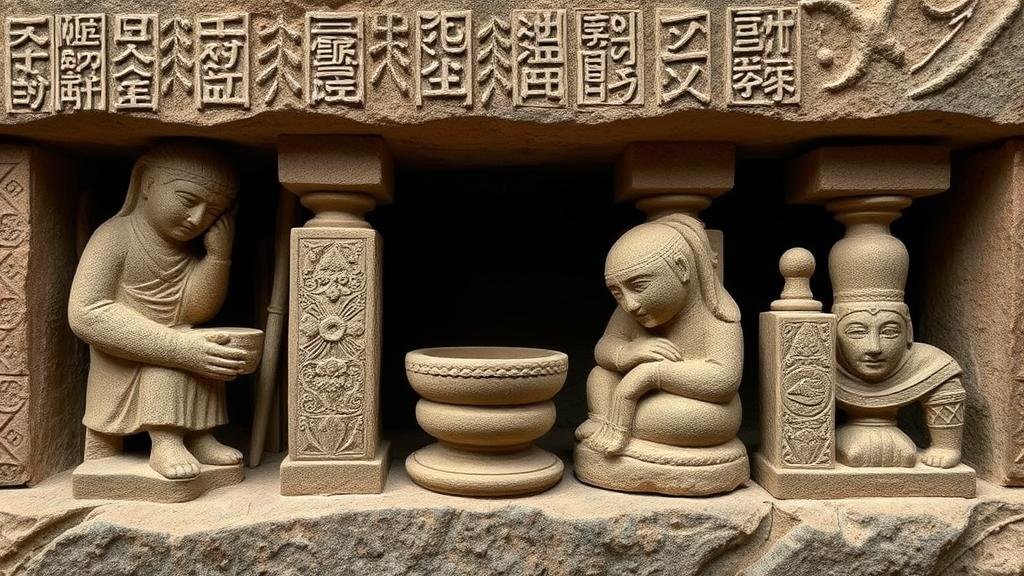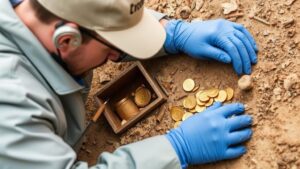Rediscovering Artifacts in Lost Stone Carving Guild Records
Rediscovering Artifacts in Lost Stone Carving Guild Records
The study of historic artifact production often relies on extensive documentation, particularly records from guilds that were prevalent during medieval times. One such guild, the Stone Carving Guild, played a pivotal role in the creation of architectural marvels that have withstood the test of time. This research article aims to explore the significance of rediscovered records from these guilds, focusing on their contributions to the fields of art history and archaeology.
Historical Context of the Stone Carving Guild
The Stone Carving Guilds emerged in Europe during the Middle Ages, particularly in regions such as France, Germany, and Italy, roughly from the 12th to the 16th centuries. e guilds were not merely associations of craftsmen but were fundamental to the regulation and dissemination of techniques in stone carving and masonry. Notable examples include the Guild of Stonemasons in medieval Paris, established in 1260, which is known for its impact on the construction of Notre-Dame Cathedral.
Significance of Lost Guild Records
The archives maintained by these guilds contained invaluable information regarding their members, apprenticeships, transactions, and techniques. But, many of these documents were lost, either due to the ravages of time or historical events such as wars. rediscovery of such artifacts provides insight into the socio-economic conditions of the period and the craftsmanship that differentiated various guilds.
Cultural and Artistic Implications
The rediscovered records highlight the collaborative nature of stone carving during the medieval era. For example, the records of the Guild of Stonemasons in Florence, dating back to 1400, reveal the diverse influences of Roman and Gothic styles on their work. These records show an evolution in artistry that incorporated regional motifs and techniques, contributing significantly to the Renaissance art movement.
Documented Evidence and Case Studies
Research has uncovered several important documents, such as a fragmentary contract from 1485 detailing the commission of stone carvings for the façade of the Cathedral of Santa Maria del Fiore in Florence. This contract specifies the techniques and materials required, showcasing the intricate planning and artistry involved. Such examples serve as case studies that underline the importance of documentation in understanding historical practices.
Methodology for Rediscovery
Recent advances in archival science and digital humanities have facilitated the rediscovery of lost records. Utilizing methods such as:
- Textual analysis of manuscripts
- Digital reconstruction of fragmented documents
- Collaboration with historians and archaeologists
These methodologies have allowed researchers to uncover, interpret, and contextualize the records that were once thought to be lost forever. For example, the use of high-resolution imaging technologies has enabled scholars to read faded notations in historical documents, providing new insights into past practices.
Real-World Applications
The implications of rediscovered guild records extend beyond academic interest. Knowledge gained from these documents can inform contemporary restoration projects. For example, the techniques documented in lost records can guide modern stonemasons in conserving medieval structures, ensuring historical accuracy in repairs. restoration of the Westminster Abbey’s stoneworks, utilizing traditional methods referenced in guild records, exemplifies how ancient practices can be applied to current conservation efforts.
Conclusion
The rediscovery of artifacts within lost Stone Carving Guild records reaffirms their essential role in understanding the socio-cultural dynamics of the medieval era. By bridging the gap between past craftsmanship and contemporary practices, these records offer invaluable insights into historical artistry and its evolution. Future research should continue to focus on the integration of these findings into both academic and practical applications, fostering a deeper appreciation for the rich history of stone carving.
In closing, the examination of lost guild records serves as a potent reminder of the importance of documentation in preserving cultural heritage. As scholars and practitioners continue to explore these resources, they will undoubtedly enrich our understanding of medieval craftsmanship and its enduring legacy.



